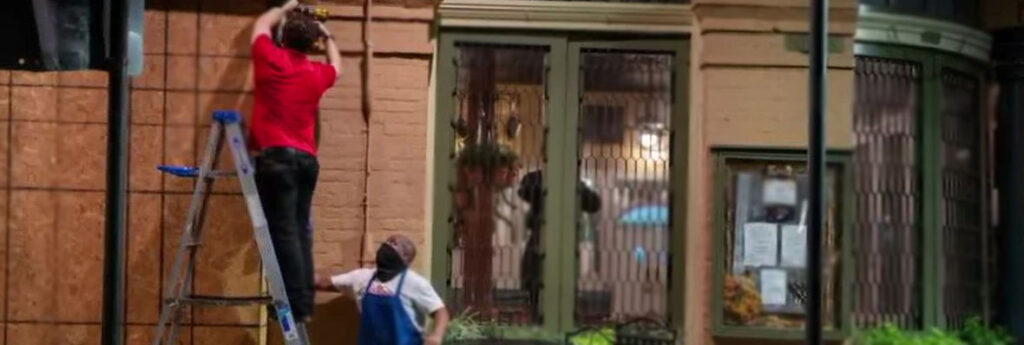Hurricane Zeta slammed into storm-weary Louisiana on Wednesday with New Orleans squarely in its path, pelting homes and businesses with rain and high winds and threatening to push up to 9 feet of sea water inland in a Gulf Coast region already pounded by multiple storms this year.
Some roads were flooded near the coast, where forecasters said Zeta was making landfall around Terrebone Bay near Cocodrie, an unincorporated fishing village at the end of a highway with a marine laboratory but few if any full-time residents.
Rain lashed the French Quarter in New Orleans, and streams of water ran off roofs. Trees whipped back and forth in the wind, though a few people were still out on Bourbon Street with umbrellas or in slow-moving cars. The iconic streetcars were idled and City Hall closed, Mayor LaToya Cantrell said.
Zeta had top sustained winds of 110 (177 kph) as a Category 2 hurricane and was the 27th named storm of a historically busy Atlantic hurricane season – with over a month left before it ends.
Tropical storm warnings were issued as far away as the north Georgia mountains, highly unusual for the region. New Orleans has been in the warning areas of six previous storms that veered east or west this season. This time, Zeta stayed on course.
Zeta had been predicted to hit as a relatively weak Category 1 hurricane, but Louisiana residents awoke to updated forecasts predicting a Category 2 at landfall around the southeastern part of the state.
“The good news for us – and look, you take good news where you can find it – the storm’s forward speed is 17 mph. That’s projected to increase, and so it’s going to get in and out of the area relatively quickly, and then we’re going to be able to assess the damage more quickly,” Gov. John Bel Edwards said in an interview on The Weather Channel.
Officials urged people to take precautions and prepare to shelter in place, and a business-as-usual atmosphere in the morning in New Orleans diminished as the storm neared and grew stronger. Traffic slowed, and restaurants and coffee shops shut down.
Zeta lashed the northern Gulf Coast with wind, rain and storm surge more than 150 miles (241 kilometres) east of New Orleans. In Mississippi, street lights swayed in Biloxi and the city of Pass Christian ordered all boats out of the harbour. Dauphin Island, Alabama, shut off water and sewer service in areas that typically are swamped in storms.
By Wednesday afternoon, Zeta’s top winds had risen to just shy of a major, Category 3 storm, according to the US National Hurricane Center.
The deteriorating weather prompted early voting sites to close for hours in the western Florida Panhandle.
An average season sees six hurricanes and 12 named storms. This extraordinarily busy season has focused attention on climate change, which scientists say is causing wetter, stronger and more destructive storms.
And as the 11th named storm to make landfall in the continental US, Zeta will set a new record, well beyond the nine storms that hit in 1916.

